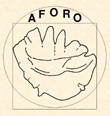




Site best viewed with 1024 x 768 resolution
Otolith identification system overview
|
Otolith morphology is a way of providing information on species, phylogeny,
ecobiological parameters and geographic origin. The sagitta otolith shape
variability has been related to genetic, ontogenetic and environmental
factors and their species-specific shape properties has been used in
stomach contents studies of marine ictiophagous species and in
descriptions of fossil fauna to determine species composition.
Ontogenetic otolith shape changes during fish growth has been
described and used to identify age in commercial species and
sex and maturity stage. So, an automatic system able to describe
and identify otolith shapes can be of general use for sex, age,
populations and species identification studies, and give necessary
and relevant information in ecological studies.
This automatic classification system of the otoliths in basis to saccular otolith (sagitta) outline has been built using wavelet transform algorithms. Wavelet transform representation allows to quantify the irregularities of the contour and determine its precise position. These properties make these techniques suitable for pattern recognition purposes as species recognition (Parisi-Baradad et al 2005). Every researcher who wants to identify an unknown otolith (from stomach of ictiophagus species, fossil o archaeological records) can compare his otolith images with the images of the AFORO system. AFORO is composed of a database of high-resolution images of fish otoliths with complete morphometric information (otolith length, area, weight, perimeter), including a shape analysis module (FTT, WT and CSS) that provide mathematical descriptors of the otolith shapes (Lombarte et al 2006) and the points of their contours represented in x/y co-ordinates (Piera et al. 2005). |
Return